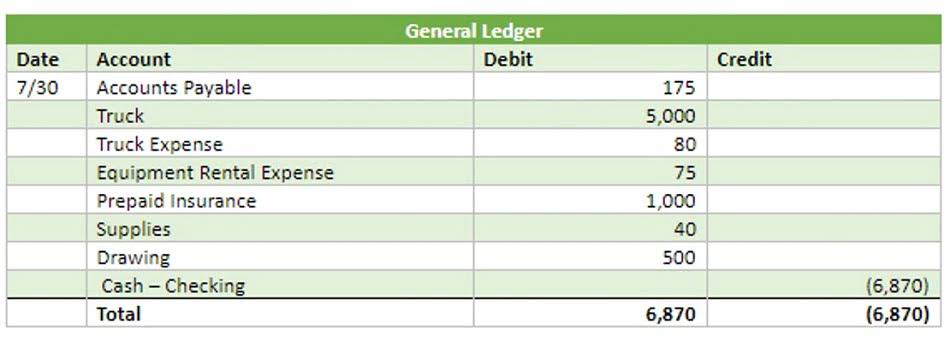Entering into strategic partnerships or mergers with other companies can increase equity and potentially reduce the need for debt. A merger with a financially stronger company can improve the equity base and improve the D/E ratio. Alternatively, forming partnerships can bring in additional capital or resources, thereby improving financial leverage. Conversely, a low D/E ratio suggests lower reliance on debt, often seen as a sign of financial stability.
The telecommunications industry is known for its capital-intensive operations, requiring significant investments in infrastructure and equipment. As a result, a debt-to-equity ratio of 1.5 for Company X may be within acceptable levels for the industry. But, a high ratio, over 2.0, warns of financial danger and future funding issues. Looking at these ratios with industry and economic trends helps us make better investment choices. By looking at the debt to equity ratio with economic conditions in mind, we can better understand a company’s finances. The d/e ratio formula is used in advanced ways, like in financial modeling and forecasting.
Understanding the Ratio
Unlike the debt-assets ratio which uses total assets as a denominator, the D/E Ratio uses total equity. This ratio highlights how a company’s capital structure is tilted either toward debt or equity financing. The debt-to-equity ratio is a powerful tool for financial analysis, providing insights into a company’s capital structure, financial leverage, and risk profile.
Companies can lower their D/E ratio by reducing debt and increasing equity. They can do this through debt reduction programs, equity financing, and retaining earnings. This improves financial risk and creditworthiness, making it easier to access capital for growth. By using these strategies, we can make our company’s financial health better. A well-managed debt-to-equity ratio is vital for sustained efficiency and better cash flow management.
What is included in Total Debt?
Debt to equity ratio (also termed as debt equity ratio) is a long term solvency ratio that indicates the soundness of long-term financial policies of a company. It shows the relation between the portion of assets financed by creditors and the portion of assets financed by stockholders. A lower debt-to-equity ratio means that investors (stockholders) fund more of the company’s assets than creditors (e.g., bank loans) do. It is usually preferred by prospective investors because a low D/E ratio usually indicates a financially stable, well-performing business. What counts as a “good” debt-to-equity (D/E) ratio will depend on the nature of the business and its industry. Companies in some industries such as utilities, consumer staples, and banking typically have relatively high D/E ratios.
- The debt-to-equity ratio is a way to assess risk when evaluating a company.
- It’s important to understand these constraints in order to interpret the ratio accurately and make well-informed financial decisions.
- A company may have a high D/E ratio, but if the interest rates on its debt are low, its financial risk could be relatively low as well.
- It’s useful to compare ratios between companies in the same industry, and you should also have a sense of the median or average D/E ratio for the company’s industry as a whole.
- The Debt-to-Equity (D/E) Ratio is a key financial metric that measures the proportion of debt used to finance a company’s assets compared to its equity.
- Lastly, the ratio does not capture affordability well because it ignores interest coverage.
In summary, the Debt-To-Equity Ratio is a vital tool in the arsenal of financial analysts, investors, and company managers. It provides a quick and effective way to assess a company’s financial leverage and risk profile. Understanding the nuances of this ratio, including industry-specific benchmarks and the implications of changes over time, is crucial for making informed financial decisions and strategies.
For example, the utility sector often has higher d/e ratios because of its need for a lot of capital. Long-term debt, like bonds and mortgages, is due in more than a year. Even with a lower ratio, too much long-term debt can be risky if not managed well.
A debt ratio of .5 means that there are half as many liabilities than there is equity. In other words, the assets of the company are funded 2-to-1 by investors to creditors. This means that investors own 66.6 cents of every dollar of company assets while creditors only own 33.3 cents on the dollar. Fundamental analysis is one of the most essential tools for investors and analysts alike, helping them assess the intrinsic value of a stock, company, or even an entire market. It focuses on the financial health and economic position of a company, often using key data such as earnings, expenses, ass… Creating a debt schedule helps split out liabilities by specific pieces.
In conclusion, understanding the debt-to-equity ratio is paramount for assessing a company’s financial stability and risk profile. Whether you are an investor, a creditor, or a company executive, a clear grasp of what this ratio indicates and how to calculate it is essential. The significance of the D/E ratio lies in its ability to provide a quick measure of a company’s financial leverage. Financial leverage refers to the extent to which a company uses debt to finance its operations.
We can easily calculate good debt to equity ratio ratio in the template provided. The D/E ratio indicates how reliant a company is on debt to finance its operations. Some analysts like to use a modified D/E ratio to calculate the figure using only long-term debt.
CAPITAL CITY TRAINING LTD
In some industries that are capital-intensive, such as oil and gas, a „normal“ D/E ratio can be as high as 2.0, whereas other sectors would consider 0.7 as an extremely high leverage ratio. A company has negative shareholder equity if it has a negative D/E ratio, because its liabilities exceed its assets. This would be considered a sign of high risk in most cases and an incentive to seek bankruptcy protection. The typically steady preferred dividend, par value, and liquidation rights make preferred shares look more like debt. Short-term debt also increases a company’s leverage, but these liabilities must be paid in a year or less, so they’re not as risky.
- Under international accounting standards all leases are capitalised.
- Simply put, the higher the D/E ratio, the more a company relies on debt to sustain itself.
- Based on factors such as industry and business model, companies exhibit substantial variation in their leverage strategies.
- The interest coverage ratio, which measures a company’s earnings relative to its interest expenses, can provide additional context for interpreting the Debt-to-Equity ratio.
- The ratio doesn’t give investors the complete picture on its own, however.
How to Calculate D/E Ratio?
As shareholders’ equity also includes „preferred stock,“ we will also consider that. The debt-to-equity (D/E) ratio can help investors identify highly leveraged companies that may pose risks during business downturns. Investors can compare a company’s D/E ratio with the average for its industry and those of its competitors to gain a sense of a company’s reliance on debt. Debt-financed growth can increase earnings, and shareholders should expect to benefit if the incremental profit increase exceeds the related rise in debt service costs. The share price may drop, however, if the additional cost of debt financing outweighs the additional income it generates.
However, an ideal D/E ratio also depends on the industry and business model. Some sectors, like utilities, typically have higher ratios due to large infrastructure investments. The D/E ratio is not a static measure and can change over time as a company’s debt levels and equity change. This dynamic nature means that the ratio needs to be monitored regularly to understand a company’s changing financial position. Other definitions of debt to equity may not respect this accounting identity, and should be carefully compared. Generally speaking, a high ratio may indicate that the company is much resourced with (outside) borrowing as compared to funding from specialized tax services sts accounting method: pwc shareholders.
To understand D/E ratio results, know the company’s industry and financial situation. Industry benchmarks and red flags help understand a company’s financial health. It gives insight into a company’s capital structure and debt management.
Other Financial Obligations
The cost of debt and a company’s ability to service it can vary with market conditions. Borrowing that seemed prudent at first can prove unprofitable later as a result. Conversely, a lower ratio indicates a firm less levered and closer to being fully equity financed.
With built-in financial reporting and forecasting, businesses can analyze profit margins, cost structures, and revenue trends. By improving profitability, a company can increase retained earnings, ultimately strengthening the equity portion of the D/E ratio. Reducing debt directly impacts the numerator in the D/E ratio formula, lowering the ratio.
This metric weighs the overall debt against the stockholders’ equity and indicates the level of risk in financing your company. It’s a highly regulated industry that makes large investments typically at a stable rate of return, generating a steady income stream, so utilities borrow heavily and relatively cheaply. High leverage ratios in slow-growth industries with stable income represent an efficient use of capital. Companies in the consumer staples sector tend to have high D/E ratios for similar reasons. In a basic sense, Total Debt / Equity is a measure of all of a company’s future obligations on the balance sheet relative to equity. However, the ratio can be more discerning as to what is actually a borrowing, as opposed to other types of obligations that might exist on the balance sheet under the liabilities section.





